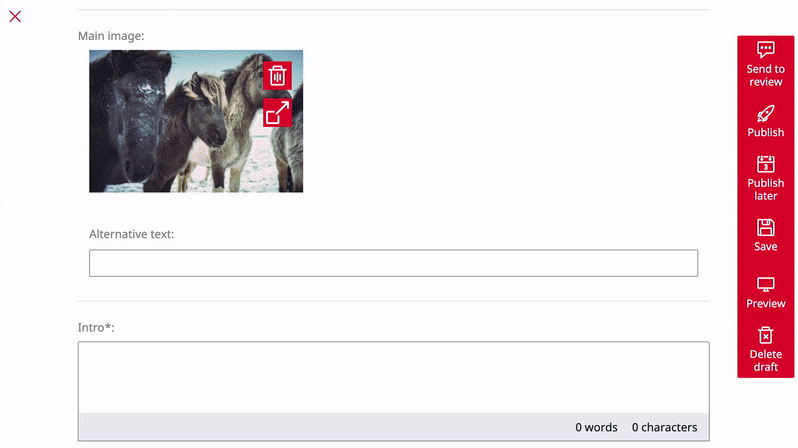New Feature Preview: DAM Connector Framework for Ibexa DXP v3.2

A modern web presence may seem simple on the outside, but behind the scenes there are many moving parts. Integrations to back office systems allow efficient managing of pricing and inventory, enabling marketing automation, content reuse and much more. This is why a Digital Experience Platform (DXP) must be able to connect to external data sources with ease.
Working in a domain where you need to integrate with many tools is a challenge. With eZ Platform you've always got unrestricted access to our full suite of APIs, so there are virtually no limits to the type of integrations you can build. However we recognize that accelerating development and speed to market are a key aspect that allows our clients to adapt to change.
At Ibexa we aim to continuously enhance connectivity capabilities in our products. According to our clients and partners, integrating to DAM (short for Digital Asset Management) systems is one of the most common tasks in DXP implementation projects. To further improve our capabilities in this area, we are introducing a new DAM Connector Framework in our next release.
What is a DAM and do you need one?
A DAM is a piece of software that specializes in the storage and retrieval of digital media such as photographs, videos, sound and 3D models. They are often used to complement tools such as Content Management Systems. In addition to interactive digital channels, the media pool can be shared across distribution channels such as broadcast television, magazines and catalogues.
Digital asset management is not only for companies working in the field of media. A DAM is also useful for companies in manufacturing or retail to ensure a smooth handover of materials, both internally and externally. For example, an OEM could store its product manuals and marketing photos in a DAM. The manuals could be referenced from the website, providing the latest version to visitors. The photographs could be provided to the distributors for product catalogs.
The Digital Asset Management market is well established with products from industry giants like Adobe and OpenText as well as upstart SaaS providers like Cloudinary and Media Pocket. In addition there are products that focus on a specific vertical, such as Kaltura or Brightcove for video — though you could argue that these are a product in a category of their own.
There is a plethora of off-the-shelf products and services available, but I've seen quite a few purpose built media management solutions over the years. These are a form of DAM as well.
Our approach to DAM integration
There are already connectors available to link Ibexa's Platform with DAM systems like the Cloudinary. But because of the near infinite number of tools in this space it is not feasible for us or our partners to support all the options on the market. With v3.2 our goal is to make integrating DAMs easier than before by providing guidelines, contracts and a UI pattern to conform to.
This is materialized in the form of a DAM Connector Framework. It is a component in our system that provides the core functionalities needed for integrating with our Platform, and provides extension points for developers to rapidly integrate to any DAM system. To provide a functional example, we ship with a reference connector for Unsplash, a gallery of royalty-free photographs.
In the user interface the DAM integration manifests itself as an extension to the Image Asset field. By default the field type allows using images from the built-in Media Library. When a DAM integration is enabled, the interface exposes an option to choose an image from an external source. Clicking this option opens a selector widget for selecting an image using a dedicated user interface. For our Unsplash connector this is a simple search form, but it could be a third party picker widget too.
Below you can see our Unsplash integration implementation in action:

Once the user selects an image, a reference to that external image is stored in the local database. There is no synchronization of images from the DAM system to the built-in Media Library. This way we do not need to worry about keeping our local assets up to date or wasting resources by storing the image assets the web server. This also means that the distribution and manipulation of the images to visitors is solely the responsibility of the DAM system in use.
Because the updated media asset field type can reference local or remote media, there is no need for data migration when upgrading to v3.2 as you can continue to both types side by side.
The way forward for Ibexa's DXP connectors
The release of v3.2 is the first step to accelerate building connectors for Ibexa's DXP. By choosing a popular use case and a limited scope we can bring the initial version to our users early. From here on we can collect feedback from our clients and partners. Future versions will add requested functionalities like uploads and working with other media types.
If you've planned to work on an implementation project where you need to connect to a Digital Asset Management system, then it is a great time to get started on this with the upcoming 3.2 release. With our approach we can accelerate integrating to established products as well as bespoke systems - pretty much anything that has an API to connect to.
In the future we can use the model of providing an integration framework and a reference implementation as a blueprint for other common needs such as CRM or ERP connectors. Head over to our public roadmap to learn about our future plans and make your voice heard.
